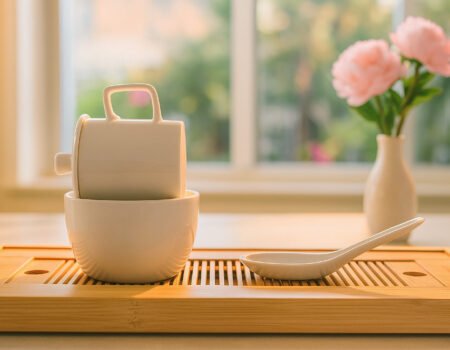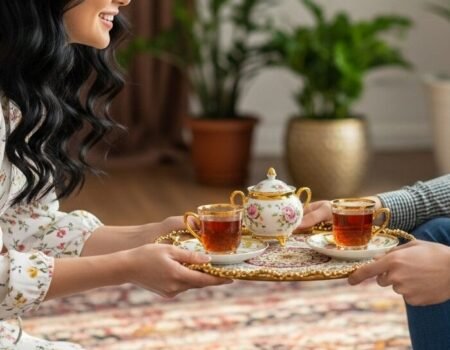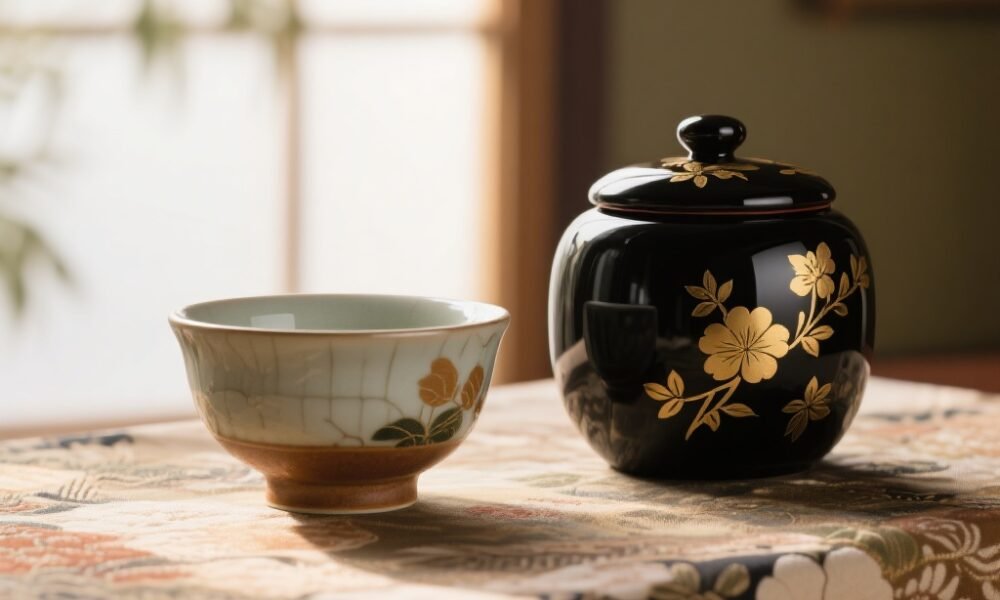
The Guide to Tea Caddies: From Classic Storage to Japanese Tradition
Index
Index
Tea leaves lose their flavor when stored in paper bags or flimsy containers. Tea caddies have been used for centuries to protect tea from moisture, light, and air. These stylish storage options keep your favorite teas fresh while adding beauty to your kitchen counter.
In this article, we will cover the key principles for preserving tea, review the best caddy materials, and introduce the specialized containers used in traditional Japanese tea ceremonies.
Key Takeaways
- Tea caddies protect your tea from air, light, moisture, and odors to keep flavors fresh.
- The term “caddy” comes from the Malay word “kati,” showing tea’s global journey.
- Japanese tea ceremonies use two main caddy types: natsume for thin tea and chaire for thick tea.
- Quality caddies should be opaque and airtight, with temperatures below 25°C/ 77°F and humidity under 60%.
- Traditional materials include wood with lacquer, ceramics, metal, and porcelain, each offering different preservation benefits.
The Essential Role of Tea Caddies
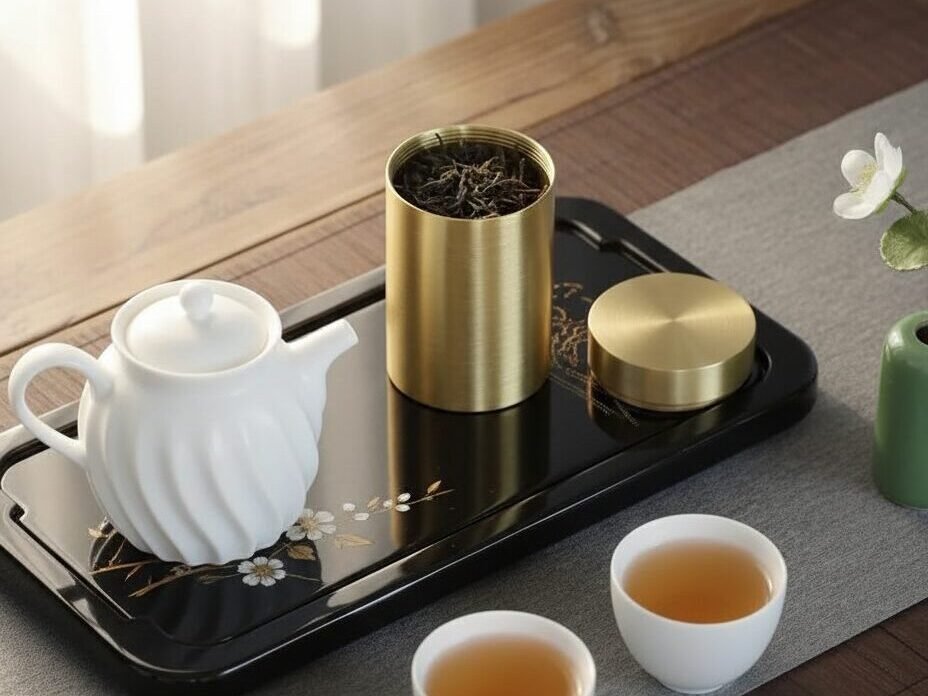
Tea caddies serve as more than simple containers – they protect your tea from its worst enemies: air, light, moisture, and odors. A good tea caddy keeps your favorite brews fresh and flavorful while adding a touch of style to your kitchen or tea corner.
Defining Tea Caddies and Their Primary Purpose

Tea caddies serve as specialized containers designed to store and preserve tea leaves. These elegant vessels emerged in the 17th century as practical solutions for keeping tea fresh while showcasing status.
The term “caddy” comes from the Malay word “kati,” reflecting the global journey of tea culture across continents. Crafted from materials like silver, porcelain, and fine woods, these storage containers protect tea from moisture, light, and air that can degrade flavor.
The primary purpose of a tea caddy extends beyond simple storage to preservation of aroma and flavor. Early caddies featured tight-fitting lids or stoppers to maintain freshness, a design element that remains crucial in modern versions.
In Europe, these containers transformed from functional items into symbols of wealth as tea gained popularity. Georgian box-shaped caddies made of mahogany became particularly prized in England, where tea drinking had become a social ritual by the 18th century.
Protecting Freshness: Key Storage Considerations
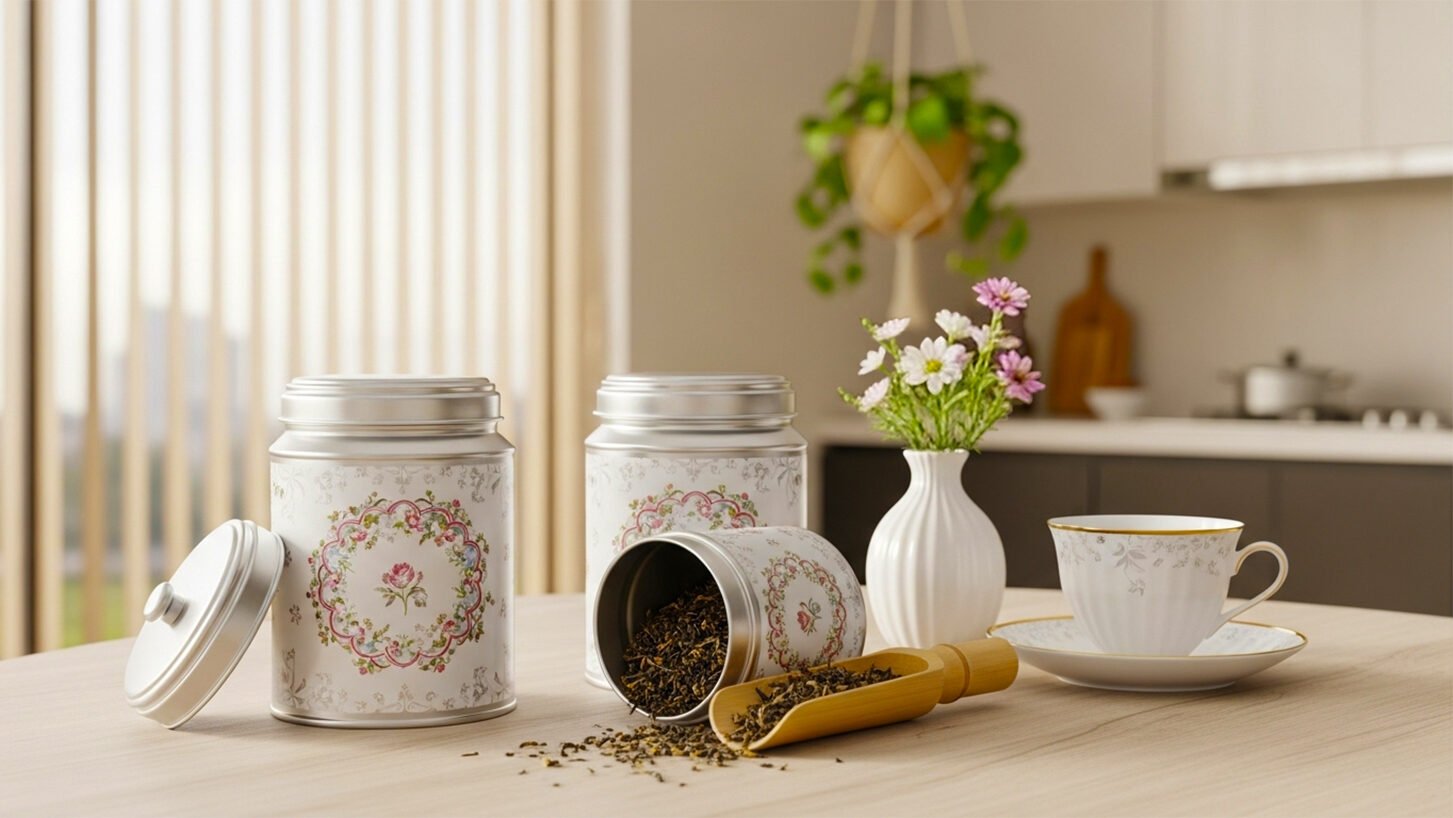
Tea stays fresh longer in the right storage conditions. Your tea bags and loose leaf varieties need protection from their four main enemies: heat, light, air, and moisture. Proper storage requires keeping temperatures below 77°F / 25°C and humidity under 60%.

Many tea enthusiasts choose opaque containers that block harmful light rays which can break down tea compounds. Metal tins, wooden chests, and ceramic caddies offer excellent solutions for maintaining flavor integrity.
Airtight seals play a crucial role in preserving tea quality. Oxygen exposure speeds up deterioration, so containers with secure lids prevent unwanted air circulation. Vacuum-sealed options provide maximum protection against oxidation.
Individual wrapping further minimizes moisture absorption, which can lead to mold growth. For best results, rotate your tea stock regularly to use older supplies first. A quality bamboo tea box or porcelain caddy with compartments makes organization simple while maintaining ideal storage conditions for different tea varieties.
Specialized Japanese Tea Caddies in Chanoyu
Japanese tea caddies play a vital role in the traditional tea ceremony, with specific types designed for different tea grades. The Natsume and Chaire containers showcase Japan’s deep respect for tea through their distinct materials, shapes, and ceremonial functions.
Natsume for Usucha: Characteristics and Materials
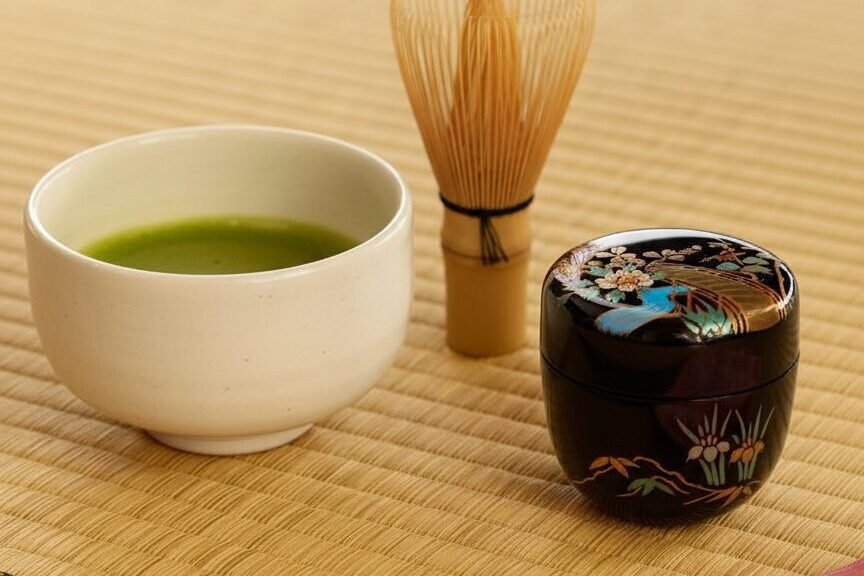
Natsume tea caddies serve as the traditional vessels for storing matcha powder used in usucha (thin tea) preparation. These elegant containers feature distinct sizes including o-natsume (large), chu-natsume (medium at about 6.8 cm, or 2.7 inches), and ko-natsume (small).
Craftsmen create authentic natsume from turned wood coated with urushi lacquer, resulting in smooth, sealed surfaces that protect the delicate tea powder from moisture and light. The wooden tea chest design offers both function and beauty in Japanese tea culture.
Modern tea storage options now include natsume made from plastic and resin, making these tea organizers more accessible to casual tea drinkers. Traditional decorative styles enhance these portable tea caddies with artistic techniques such as maki-e (gold or silver powder designs), negoro (revealing red undercoating), and koma (fine line work).
These specialized containers highlight the importance Japanese culture places on proper tea storage while adding visual appeal to the tea ceremony practice.
The Natsume’s Significance in Tea Ceremony Practice
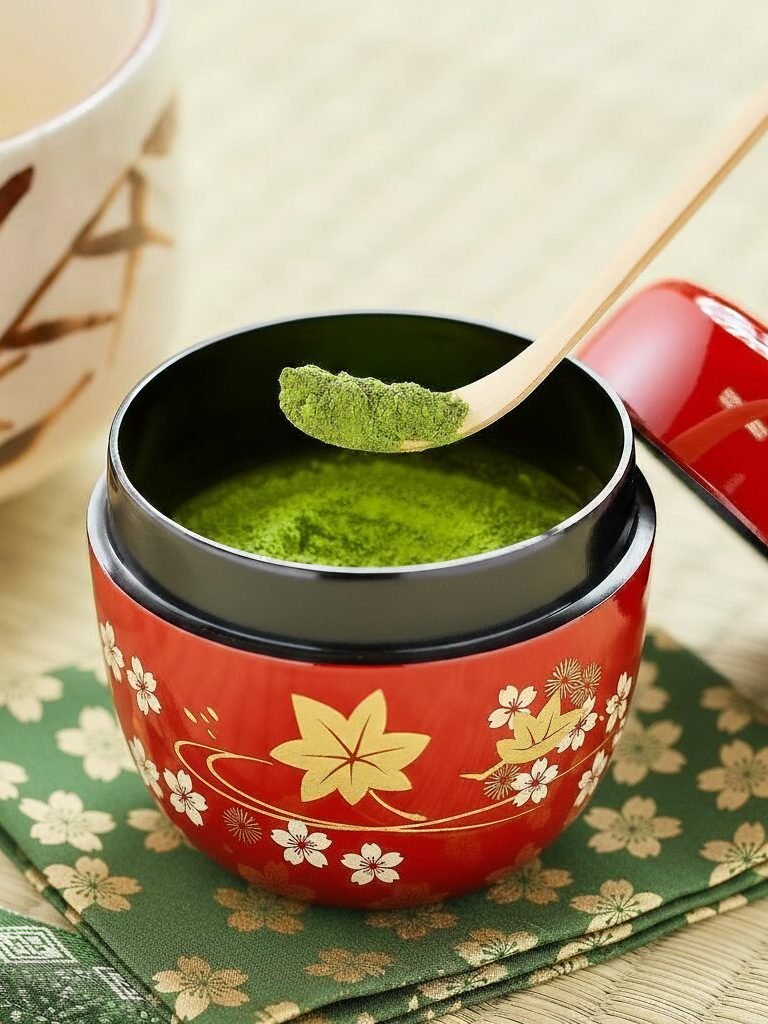
The natsume holds deep cultural meaning in Japanese tea ceremonies since the Momoyama period of the late 16th century. This small cylindrical tea caddy serves as more than a simple container for usucha (thin tea).
Tea masters value these vessels for their intricate lacquer work that displays both artistic skill and cultural heritage. During formal ceremonies, the host handles the natsume with precise movements that show respect for both the container and the powdered green tea inside.
Japanese tea practitioners view the natsume as a symbol of the ceremony’s attention to detail and beauty. Its modest size forces participants to focus on the present moment, a core value in chanoyu practice.
The careful craftsmanship of each wooden tea caddy reflects the ceremony’s emphasis on perfection in simplicity. Many antique tea caddies become family treasures, passed down through generations of tea enthusiasts.
The chaire, a ceramic container used for koicha (thick tea), offers different storage properties than the natsume.
Chaire: Understanding Ceramic Caddies for Koicha
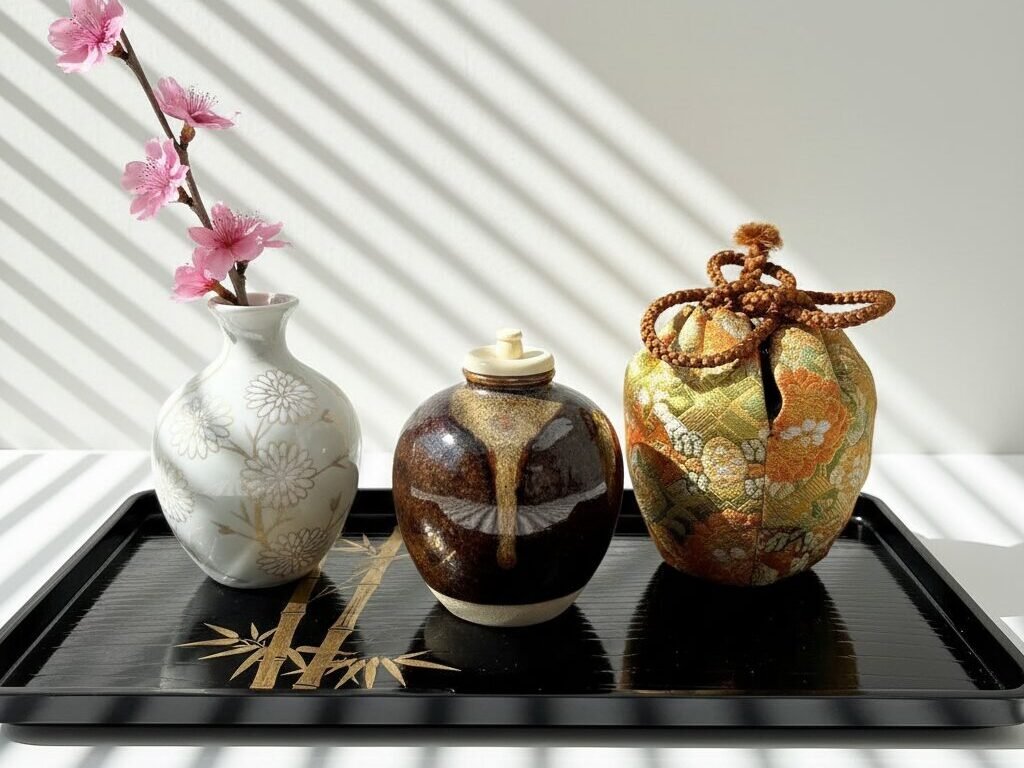
Chaire tea caddies represent a vital element in Japanese tea ceremonies, especially for storing koicha (thick tea). These ceramic containers emerged in the late 16th century and feature specific design elements suited for premium tea preservation.
Bizen stoneware chaire, standing about 3 inches (7.6 cm) tall, showcase a bulbous shape with straight shoulders and rounded rims. Natural ash glazes give each piece a unique character while the sturdy pottery from Okayama Prefecture offers excellent protection for valuable tea leaves.
Japanese tea masters select chaire based on both function and beauty, often displaying them with two silk-brocade bags during formal ceremonies. These bags serve both protective and decorative purposes, allowing hosts to choose appropriate colors for specific occasions.
Ceramic tea storage differs from wooden or metal alternatives because it maintains stable temperature and blocks light exposure. Tea enthusiasts appreciate how these traditional caddies from China connect modern practice to centuries of tea culture while preserving the delicate flavors of premium koicha powders.
Conclusion
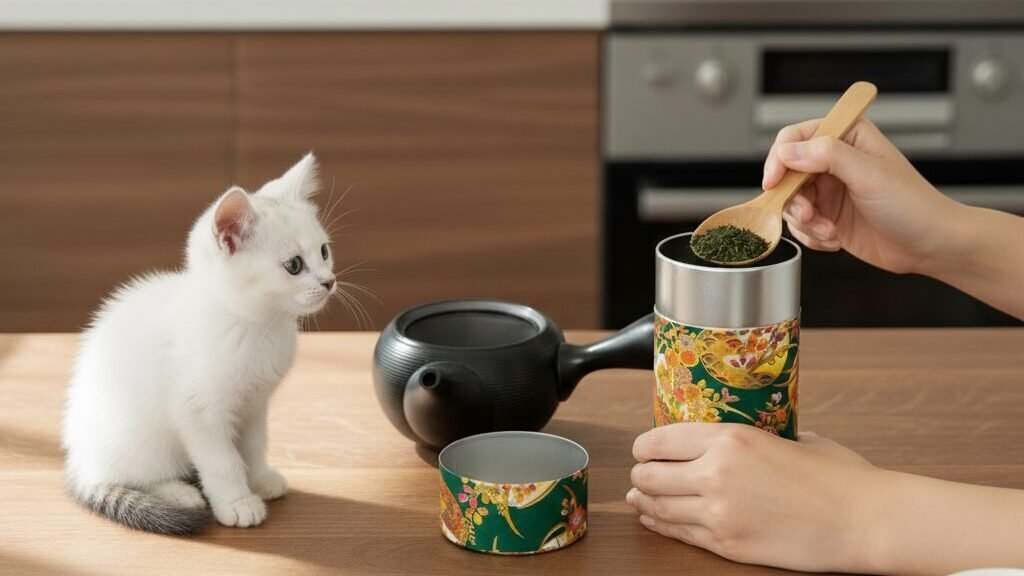
Tea caddies blend beauty with function in your daily tea ritual. A quality caddy keeps your leaves fresh while adding style to your kitchen space. Japanese designs like natsume and chaire show how storage becomes art through careful craftsmanship.
Whether you choose wood, ceramic, or metal, the right tea container preserves flavor and aroma for weeks longer than standard packaging. Your perfect caddy awaits, ready to transform both your tea experience and counter display.
FAQs
1. What are tea caddies and why do I need one?
Tea caddies are storage containers designed to keep your tea fresh and organized. They range from wooden caddies to porcelain tea containers and metal tea bag holders. You need one to protect your tea from moisture, light, and air that can ruin its flavor.
2. Which materials make the best tea caddies?
The best tea caddies come in various materials including bamboo, acacia wood, metal, and Chinese ceramics. Wood tea bag organizers offer natural beauty and good protection, while porcelain tea caddies provide an airtight seal. Metal containers often last longer and resist moisture better.
3. How do I choose between a stationary or rotating tea caddy?
Consider your space and tea drinking habits. A tea bag storage holder spinning carousel works well for frequent tea drinkers who want easy access to multiple varieties. Stationary caddies with compartments suit those with limited counter space or who prefer a more traditional look.
4. Can tea caddies serve as decorative elements?
Yes. Many tea caddies double as beautiful kitchen decor. Blue and white pottery caddies add classic charm, while black tea storage boxes offer modern elegance. Georgian box-shaped caddies in mahogany bring vintage appeal to any tea station chest for countertop display.
5. What features should I look for in a practical tea caddy?
Look for airtight seals to maintain freshness, appropriate size for your collection, and easy access design. Multi-functional tea organizers with 3 compartments or 8 compartments let you sort by tea type. Some caddies include individual tea bag slots or drawers for better organization.
6. Are tea caddies good gift options?
Tea caddies make excellent gifts for tea lovers. A wooden tea bag holder or porcelain tea caddy presented as a gift box shows thoughtfulness. When tea was introduced to England, ornate caddies became status symbols. Today, a beautiful bamboo tea bag organizer or Chinese porcelain canister still delights any tea enthusiast.
References
- https://jyyna.co.uk/tea-caddy/
- https://pmdtea.com/blogs/news/tea-caddies
- https://theorientology.com/blogs/studies/how-to-storage-tea?srsltid=AfmBOoru1aEIQ-zMScIO2UIyNHwTPgpAGBQq_05mRnYOZq3MVJCxhJg9 (2024-09-10)
- https://www.tezumi.com/blogs/tezumi-insights/natsume-a-guide-to-the-ceremonial-tea-caddy?srsltid=AfmBOor0IxgUWyQaxPYEeQIfABlryzvzi7-rm33GyKegHw2A7oZWqp0j
- https://www.tezumi.com/blogs/tezumi-insights/natsume-a-guide-to-the-ceremonial-tea-caddy?srsltid=AfmBOorBO1qgDKVkRflzCNrHfPHxvyDPEUEs3iP0OFktNXeWGDw5ASjK
- https://www.atelierikiwa.com/en/blogs/histoires/natsume-la-poesie-des-motifs-dans-la-ceremonie-du-the
- https://shogunsgallery.com/collections/natsume-tea-caddies?srsltid=AfmBOopRW6zbH7lwID5FkSOgenL08GzjwLbx8KtRhz9iLvPLXHm2mVd1
- https://www.metmuseum.org/art/collection/search/53004
- https://www.tezumi.com/blogs/tezumi-insights/natsume-a-guide-to-the-ceremonial-tea-caddy?srsltid=AfmBOopPBjkJUOvGsM-sl2MSULLeJZB2AwK9bOJSvcy0kAkR-4E7gjsh





